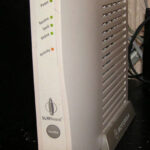With regard to software, setting up internet connections on laptop computers doesn’t differ greatly from doing the same on desktop systems. However, laptop hardware varies significantly and is more likely to pose a problem when setting up broadband or dial-up internet connections.
DIAL-UP CONNECTIONS
Some laptop computers have a built-in modem and a regular telephone jack on the rear panel; this makes setting up internet connections little different than it is for desktop computers. However, laptops without this feature may require the installation of some additional hardware, which is usually not very difficult or expensive.
Other notebooks have a “PC Card” modem installed in the PCMCIA slot; this is a thin slot located on the side of many laptop computers. In this situation, the user only needs to attach a “modem dongle”, which is an inexpensive adapter that turns the port on the side of the modem card into a regular telephone jack.
ADDING A MODEM
Still other laptops have no modem at all. There are two options for setting up internet connections on these; either purchase and install a compatible internal modem (pref. w a “dongle” included), or buy an external modem and connect it to the USB or serial port. V.92 modems have some advantages over V.90 and earlier units.
Some external modems require a separate power source, while others do not. For a newer laptop with no expansion slots, a USB external modem may be the only choice for dial-up internet users. Certain laptops made in the early-to-mid 1990s have a serial port but no expansion slots; an external serial modem is probably the best option for setting up internet connections on these.
DSL/CABLE CONNECTIONS
Accessing networks and/or high-speed internet connections requires a network interface card. If the laptop computer has an RJ45 port (looks like a large telephone jack), it should be ready for this type of connection after someone has finished setting up its software. However, many laptop computers will require a PCMCIA network card.
PCMCIA network cards are inexpensive and very easy to install. They plug into a slot, usually on the side of the laptop. Make sure the card supports the appropriate type of connections (typically Ethernet) and comes with a “dongle” that adapts its port to the right kind of jack. Combination network/modem cards are also available.
ALL INTERNET CONNECTIONS
When purchasing a network card or modem, make sure drivers are available for your laptop computer’s operating system. This is more likely to be a concern for users of old or less common operating systems. Older laptop computers only accept 16-bit PCMCIA cards (still easy to find); refer to the owner’s manual if possible.
Another factor to take into consideration when purchasing a network card or modem is its maximum internet connection speed. Avoid purchasing a dial-up modem with a speed under 28.8 kbps; try to obtain a 56 kbps model. Most network cards have a maximum speed of 10mbps or 100mbps; 10mbps isn’t as fast, but these cards are slightly less expensive and more likely to work in older systems.
After setting up the correct hardware and drivers, you will have to configure the laptop computer’s operating system and internet access software. It is possible to use dial-up or high-speed internet connections in any version of Windows, DOS, Mac OS, or Linux, although setting up Windows 98/XP or Mac OSX for this purpose is typically easier.


